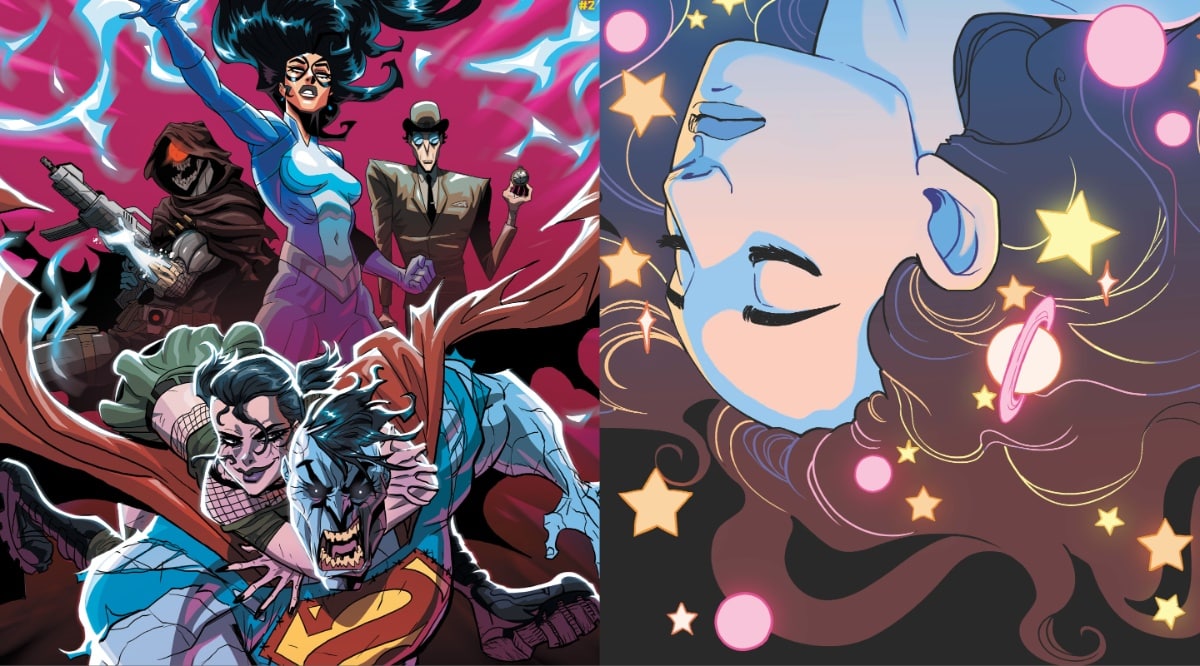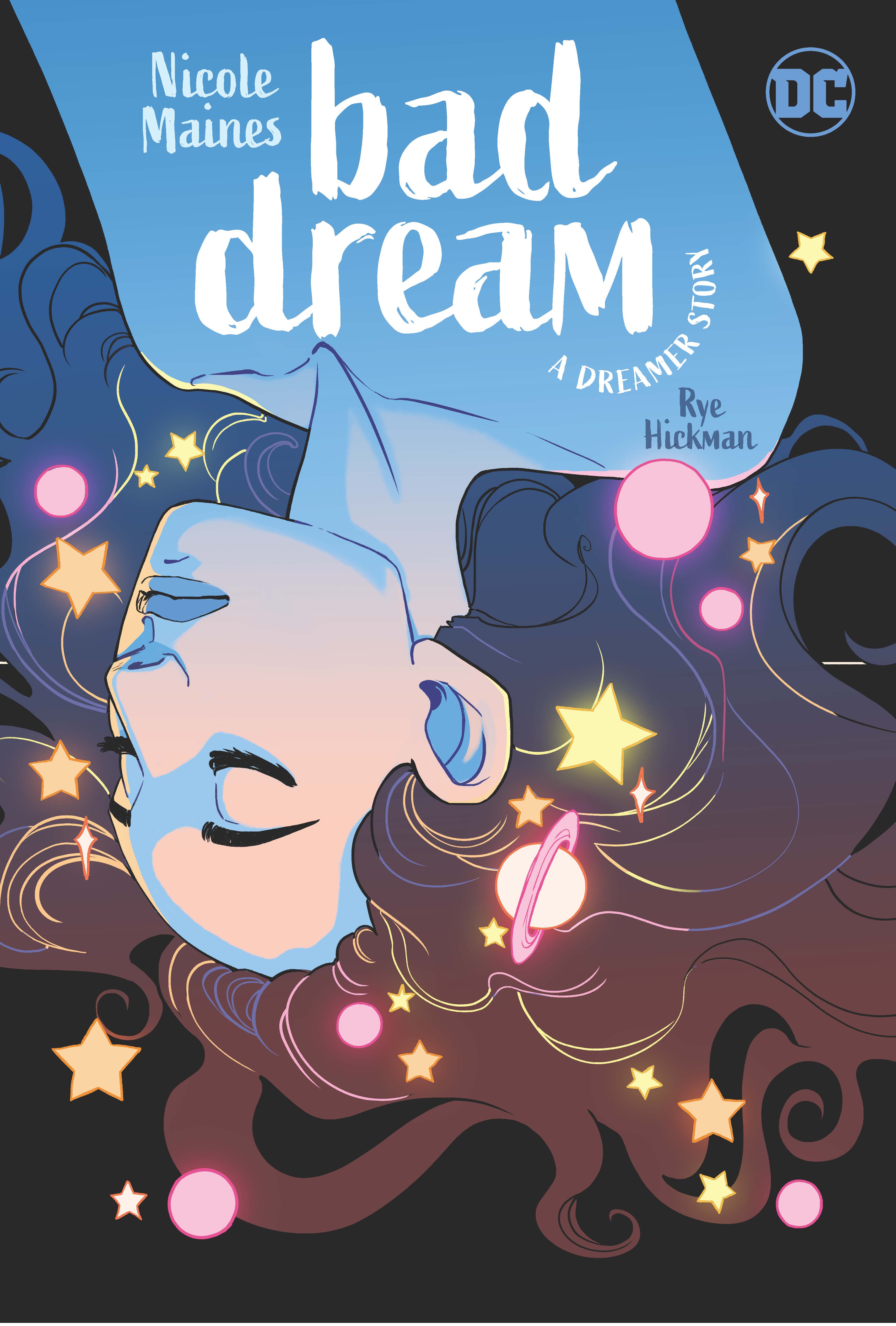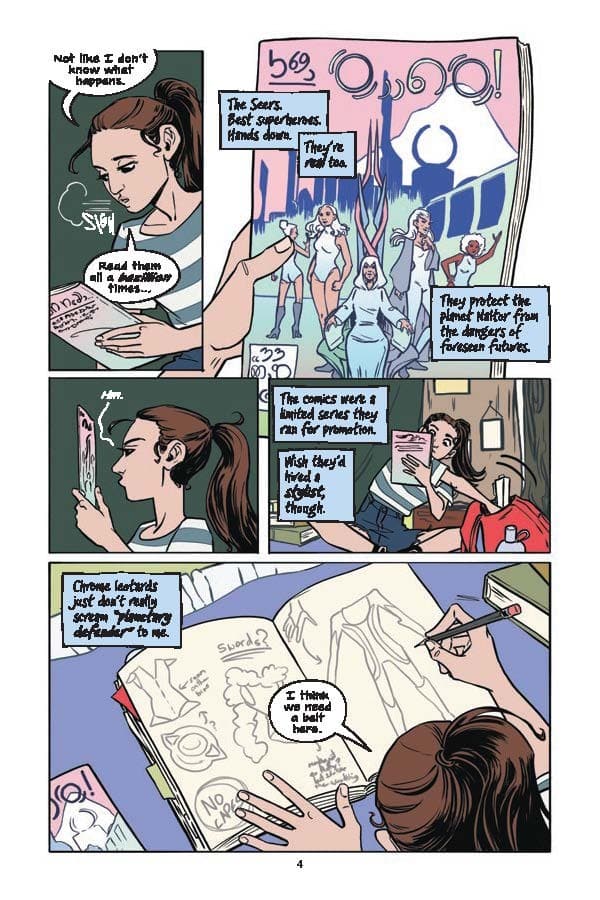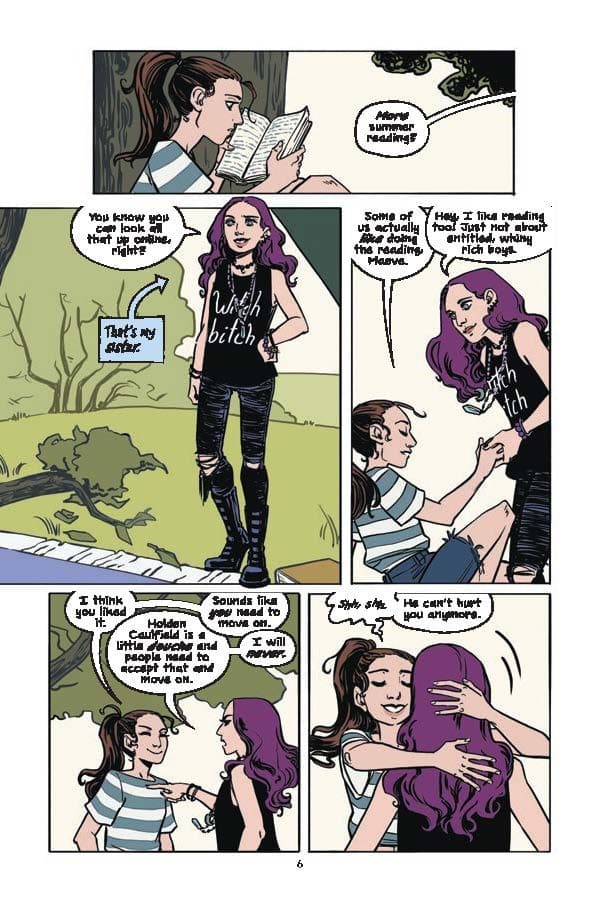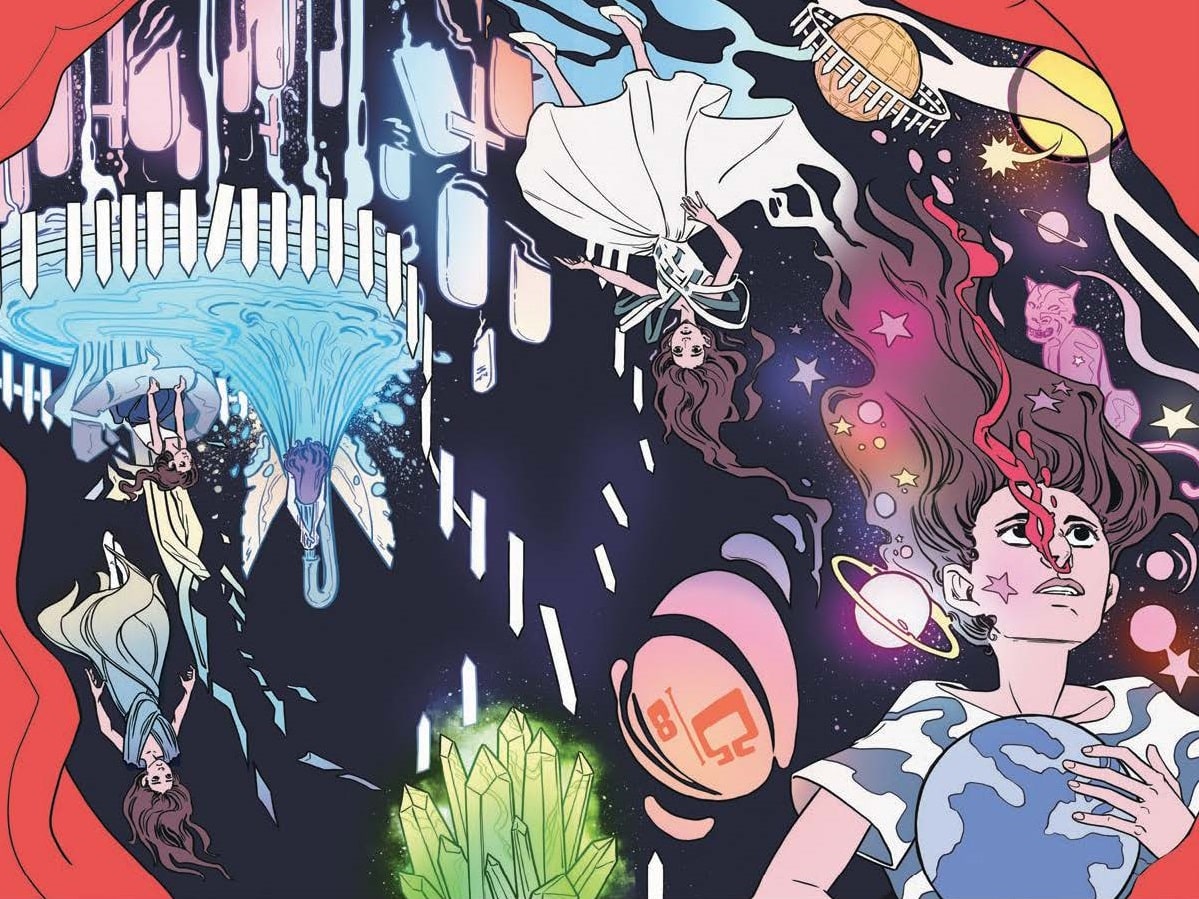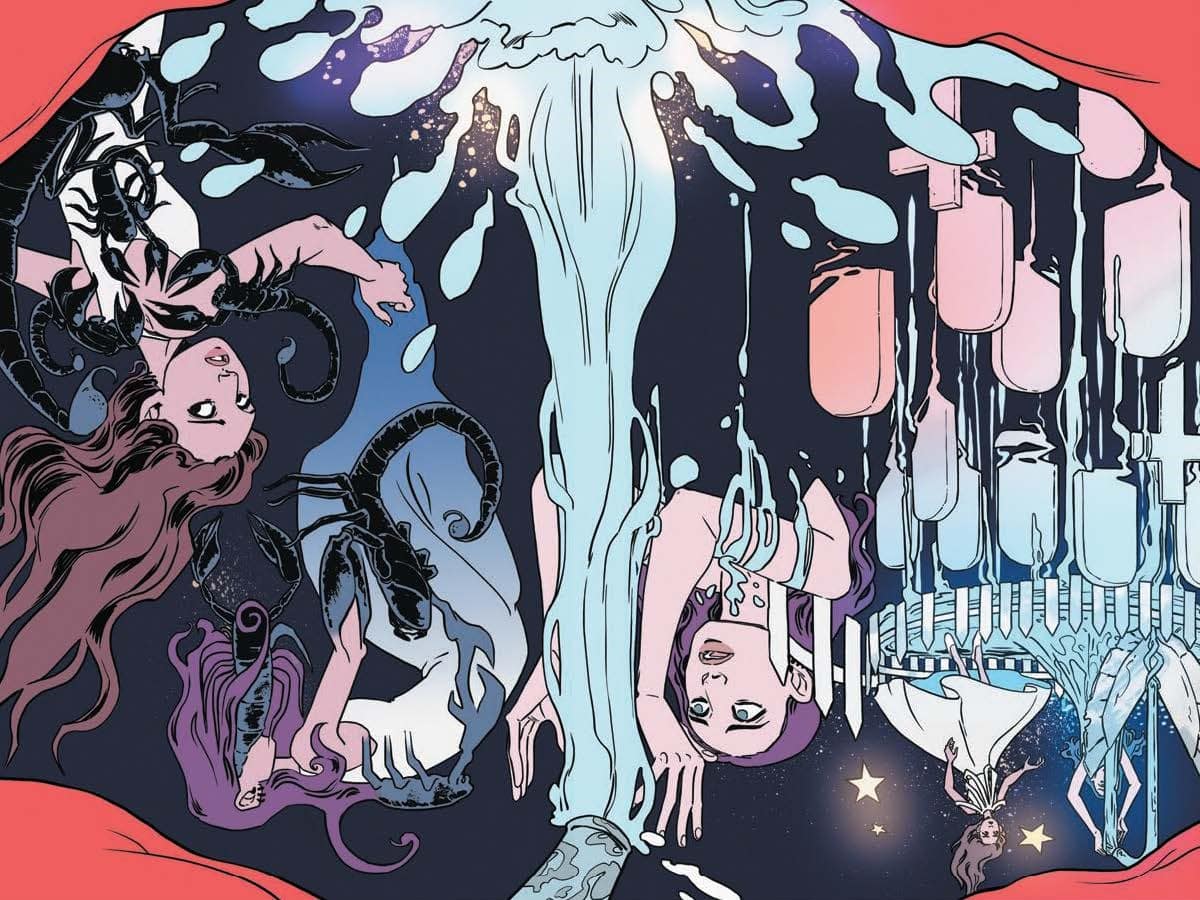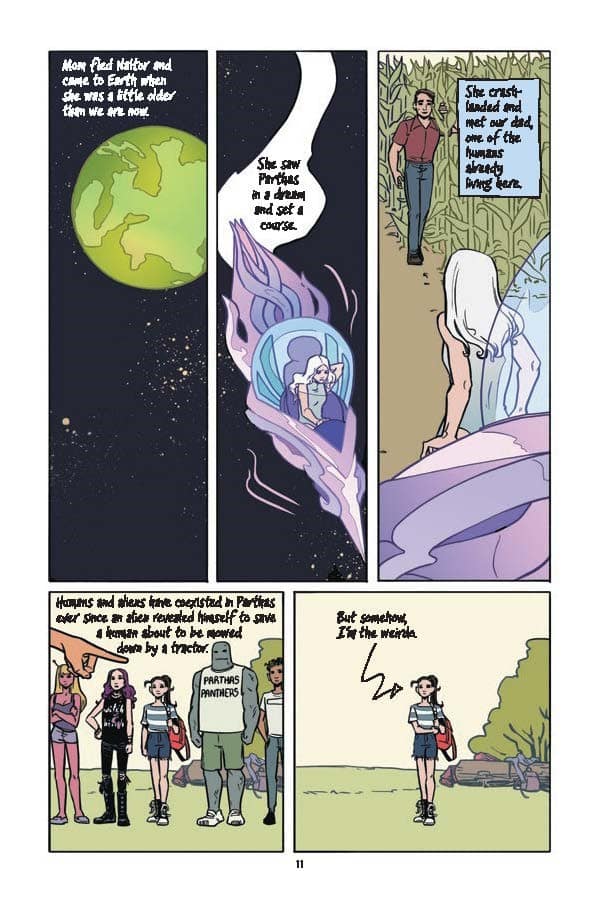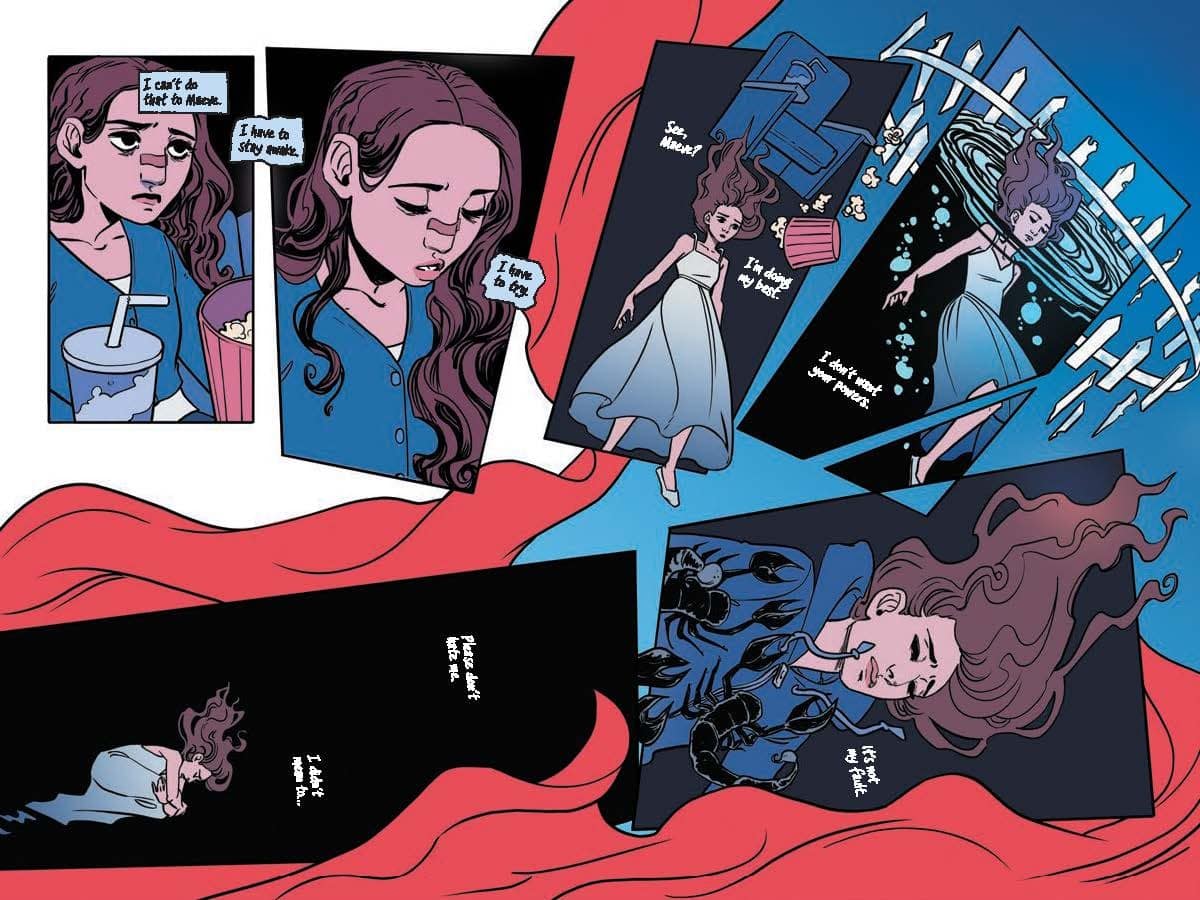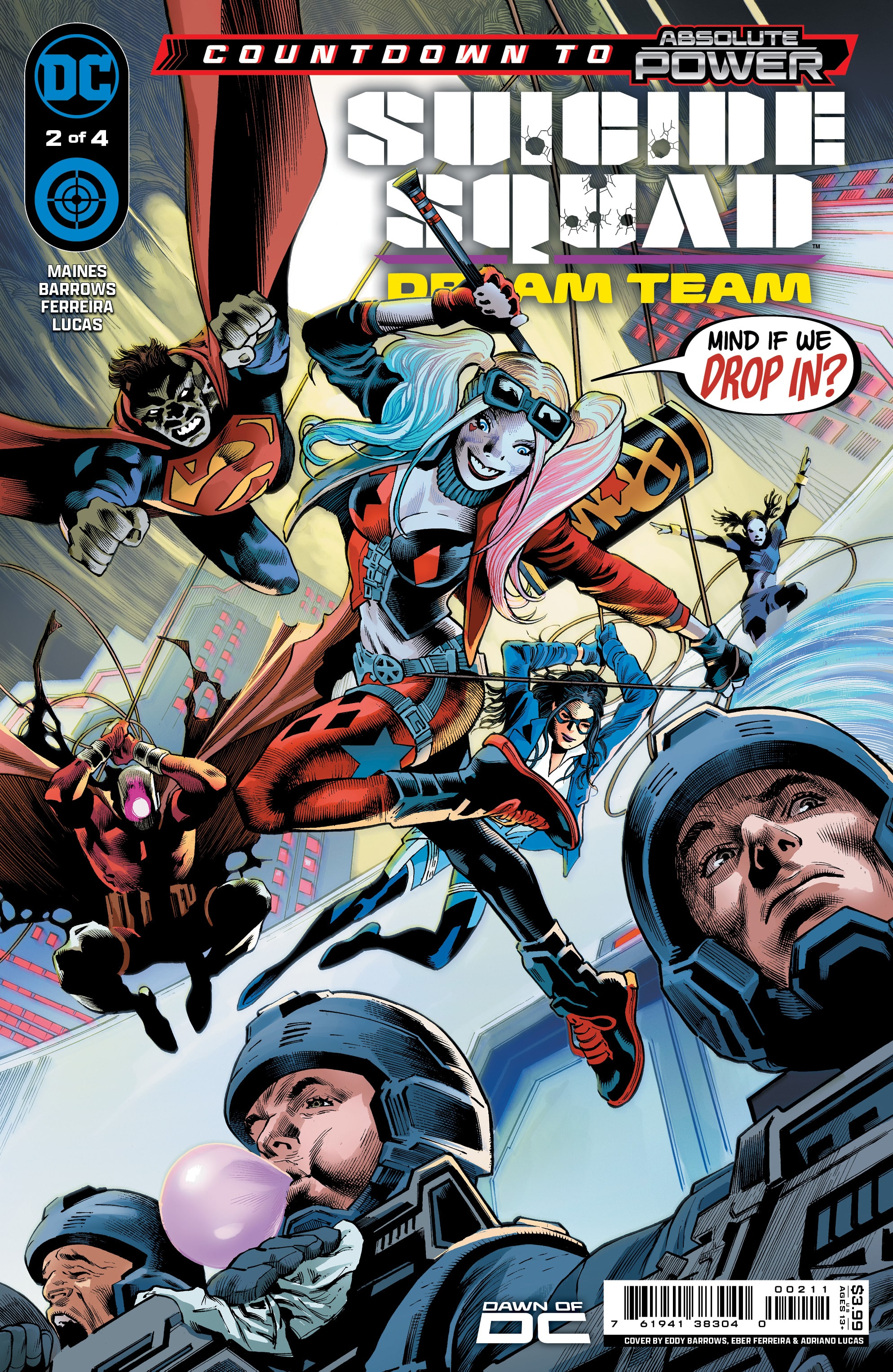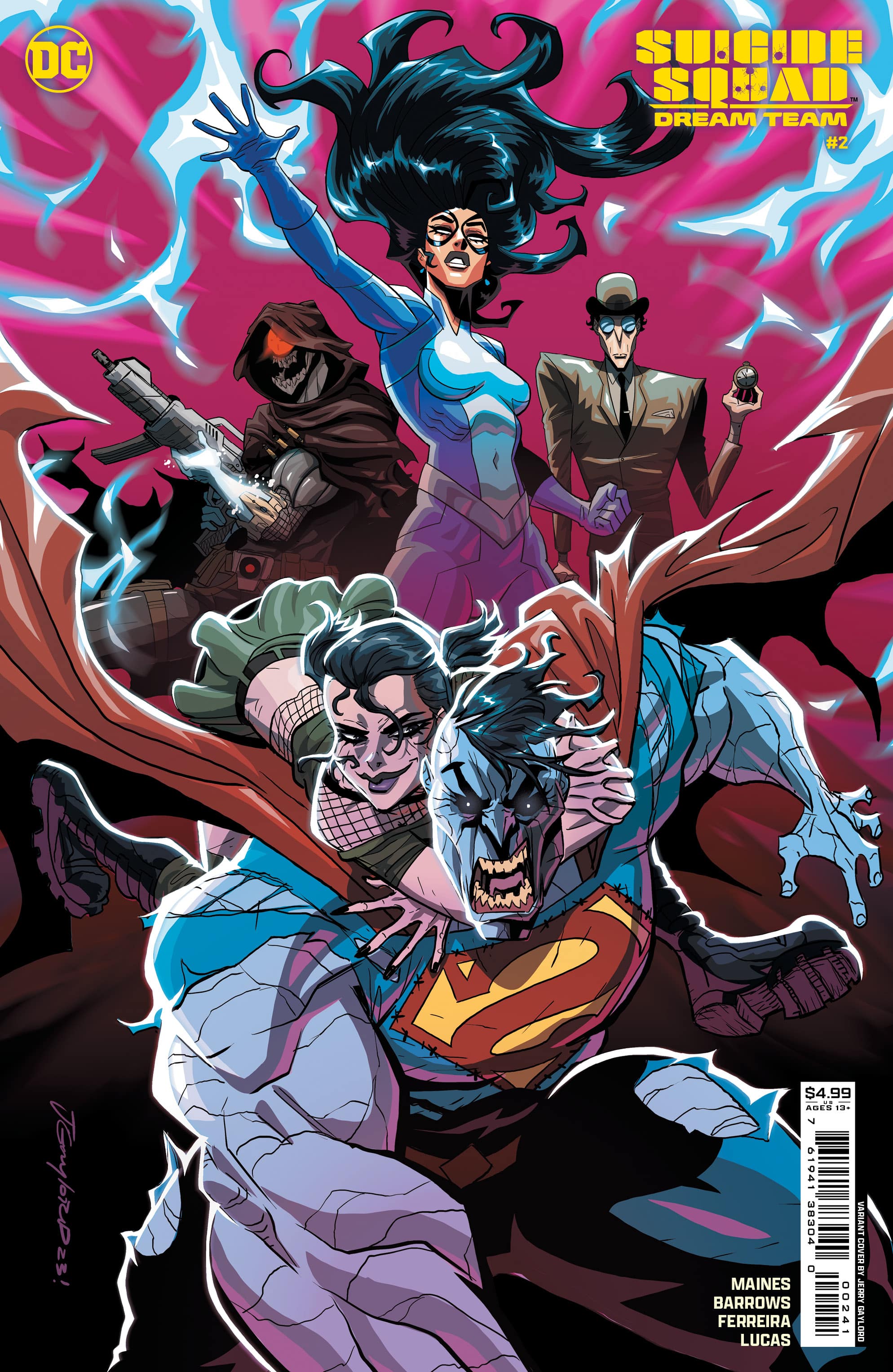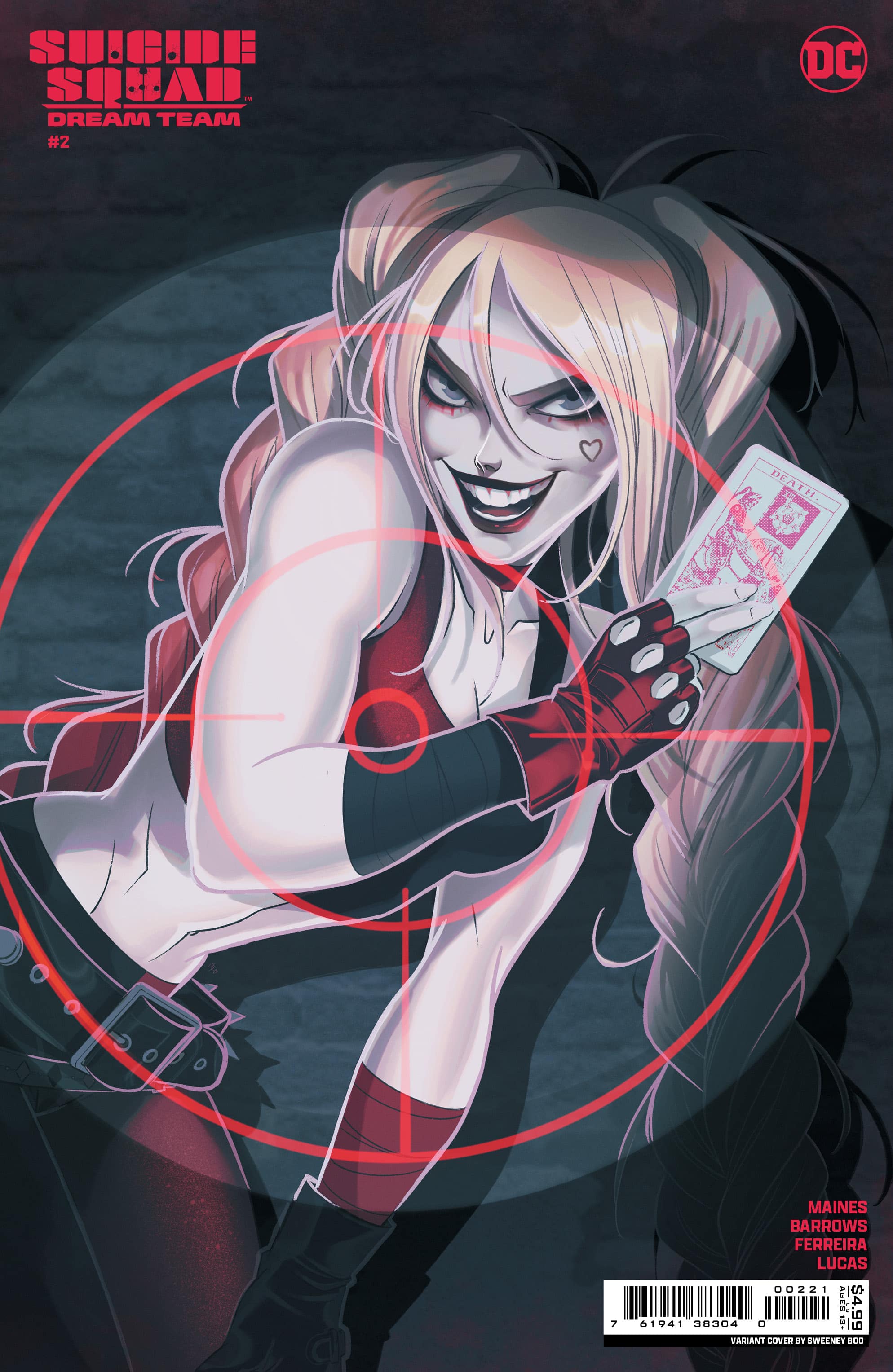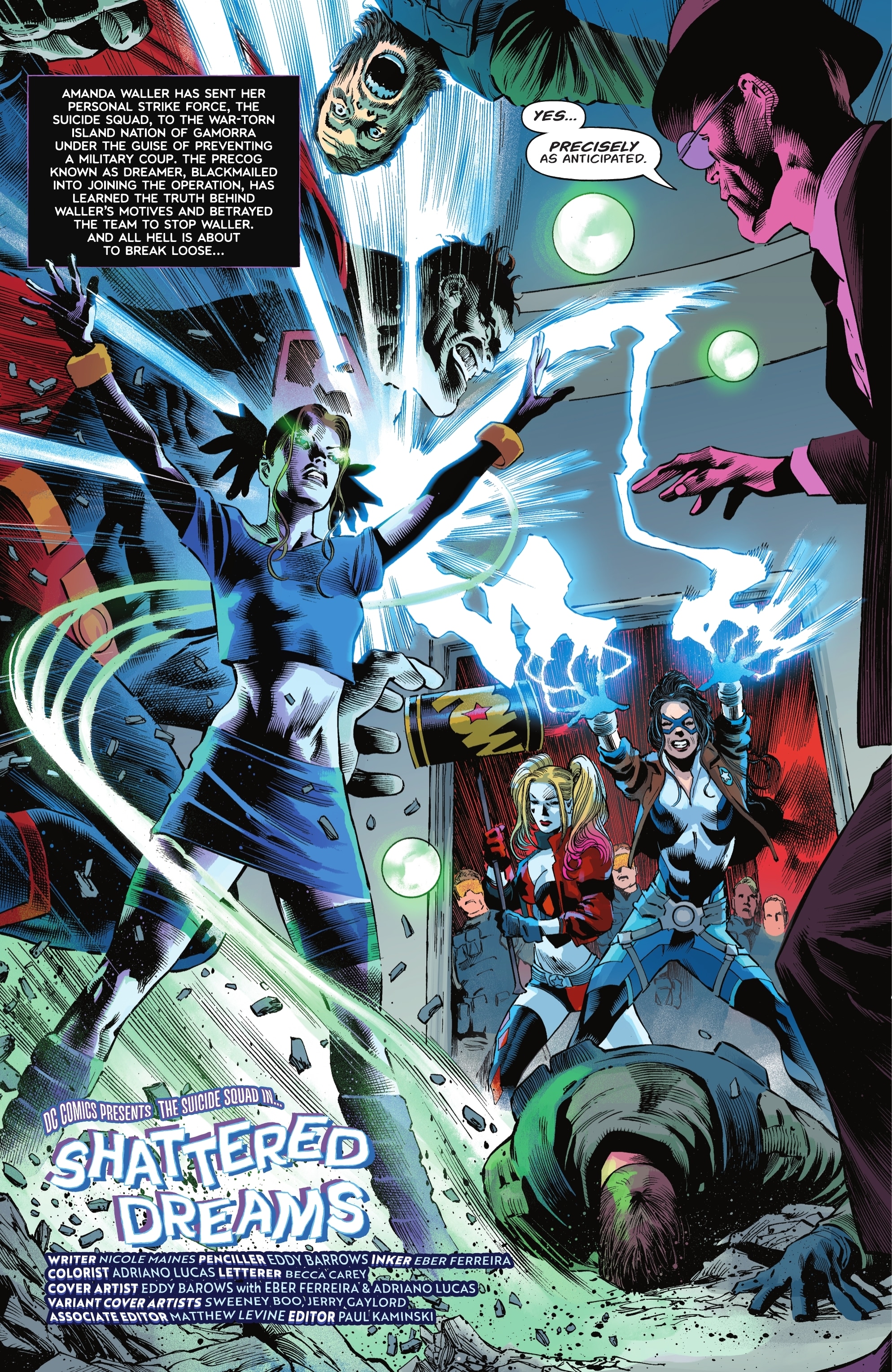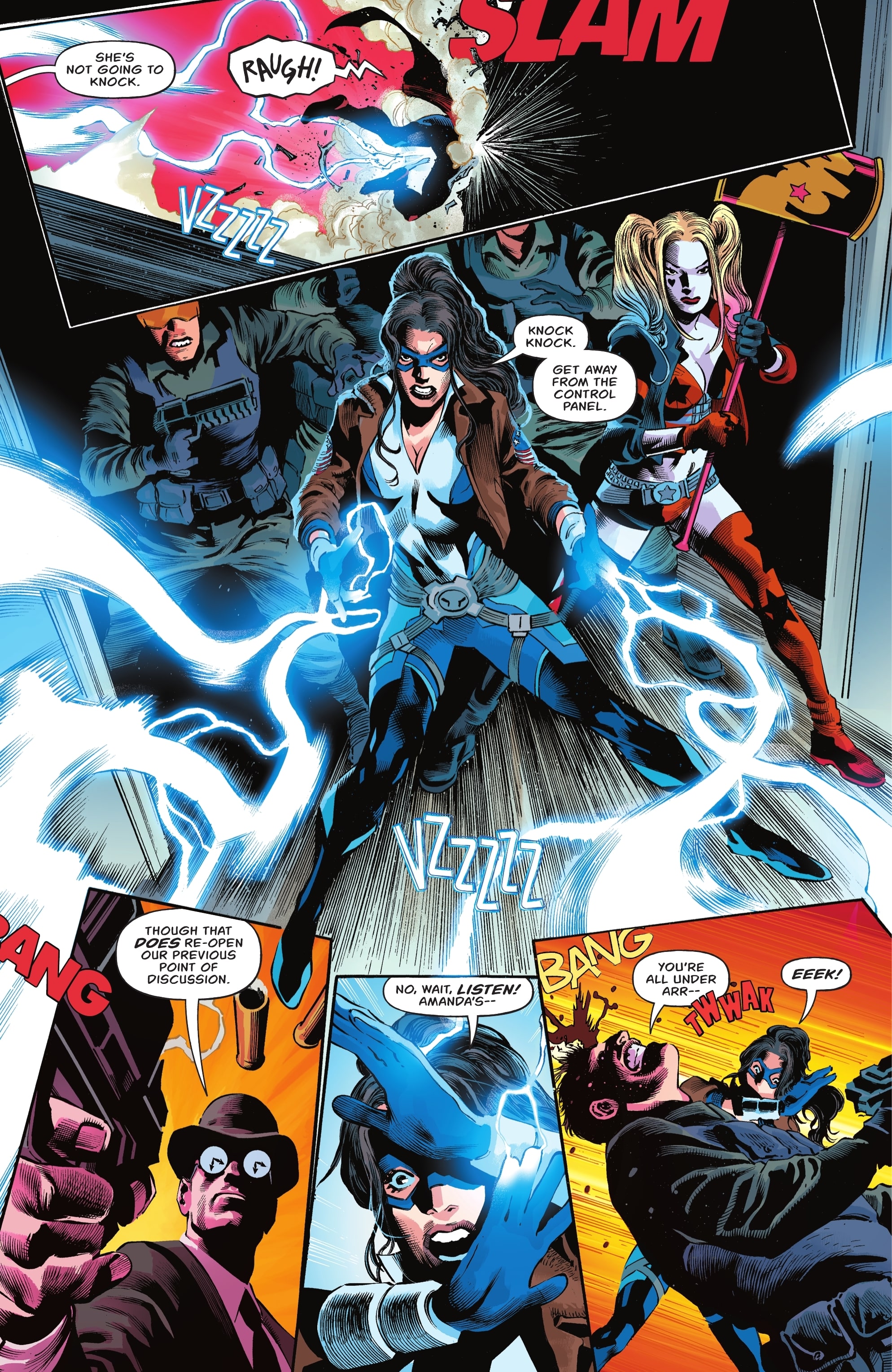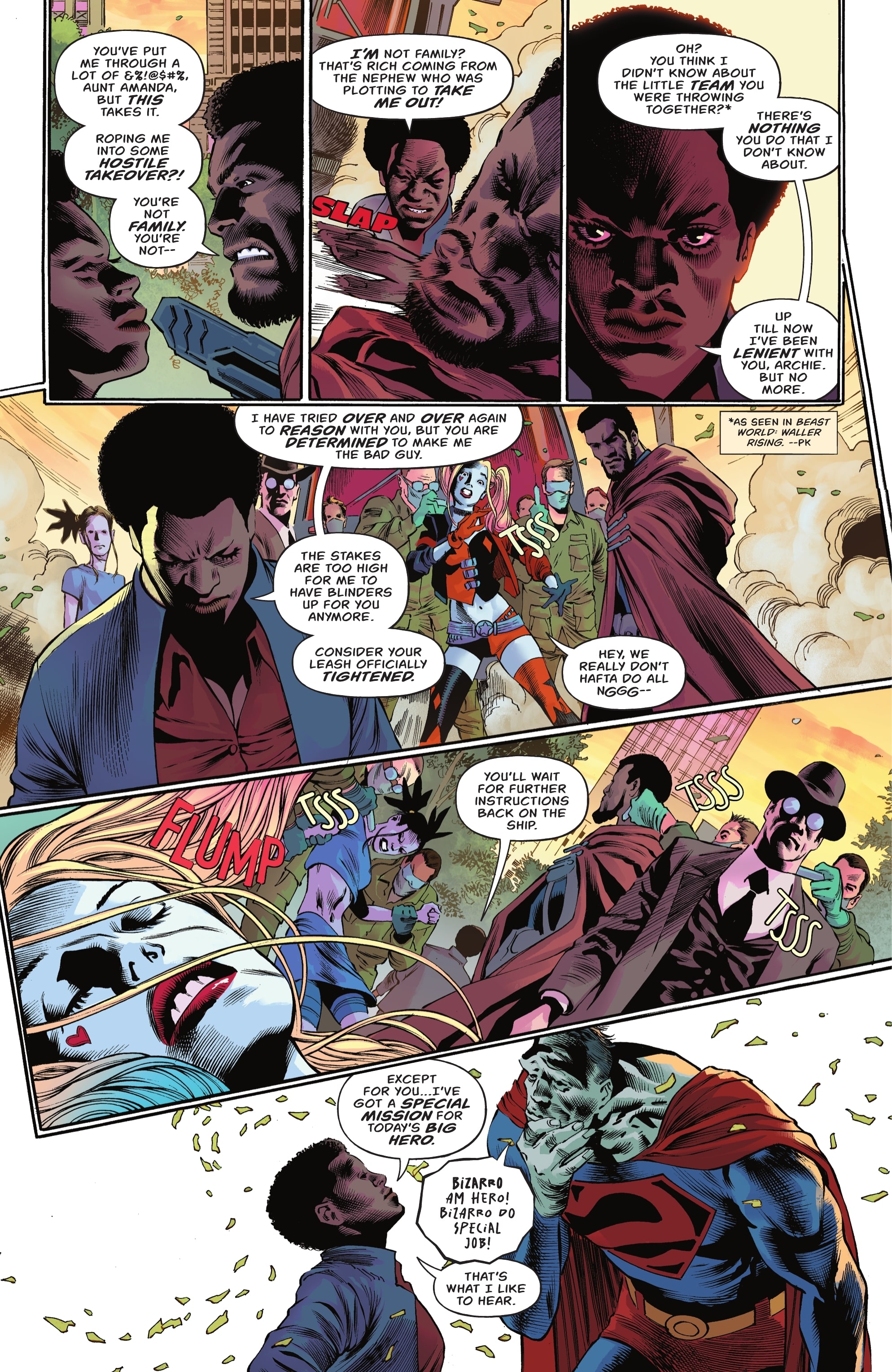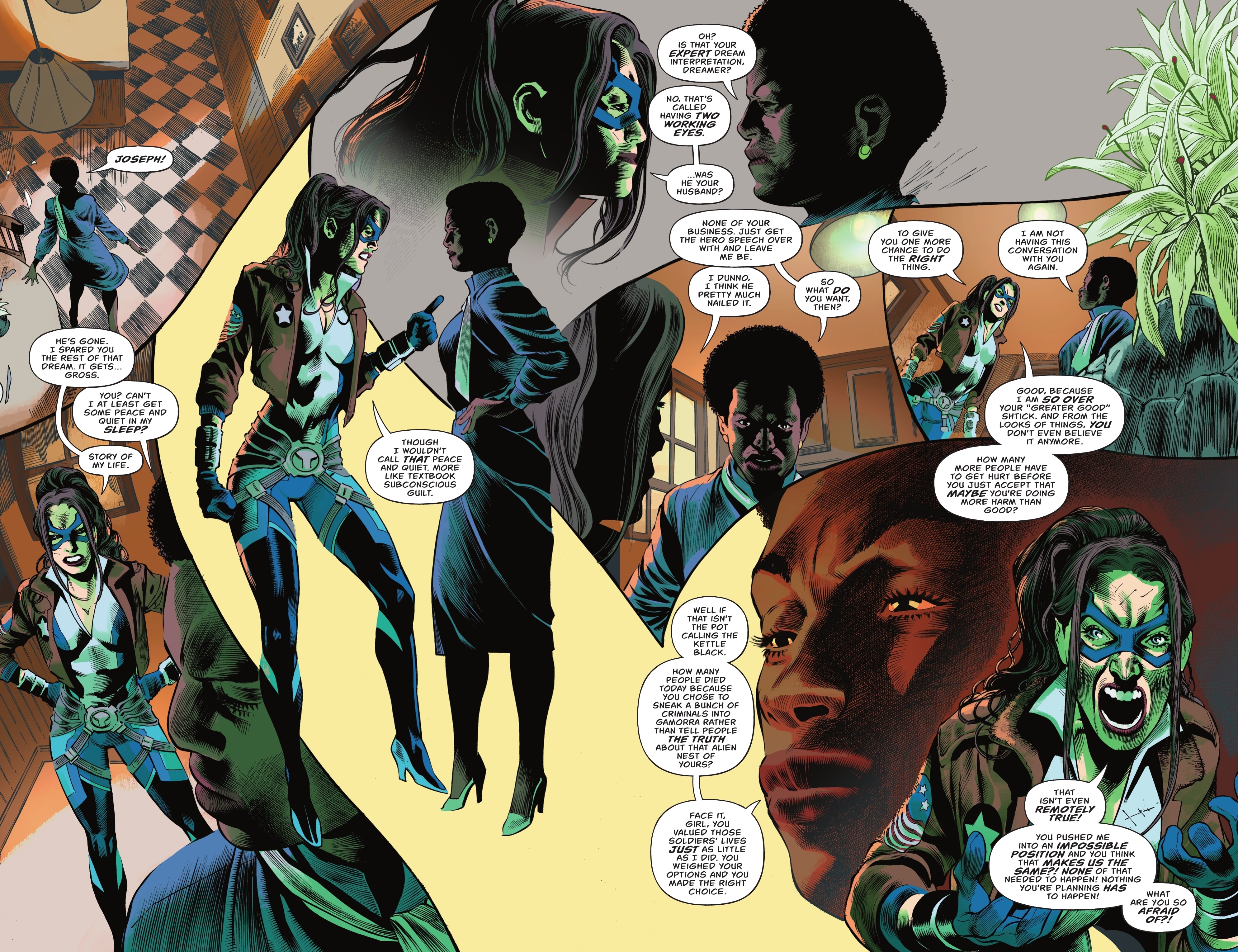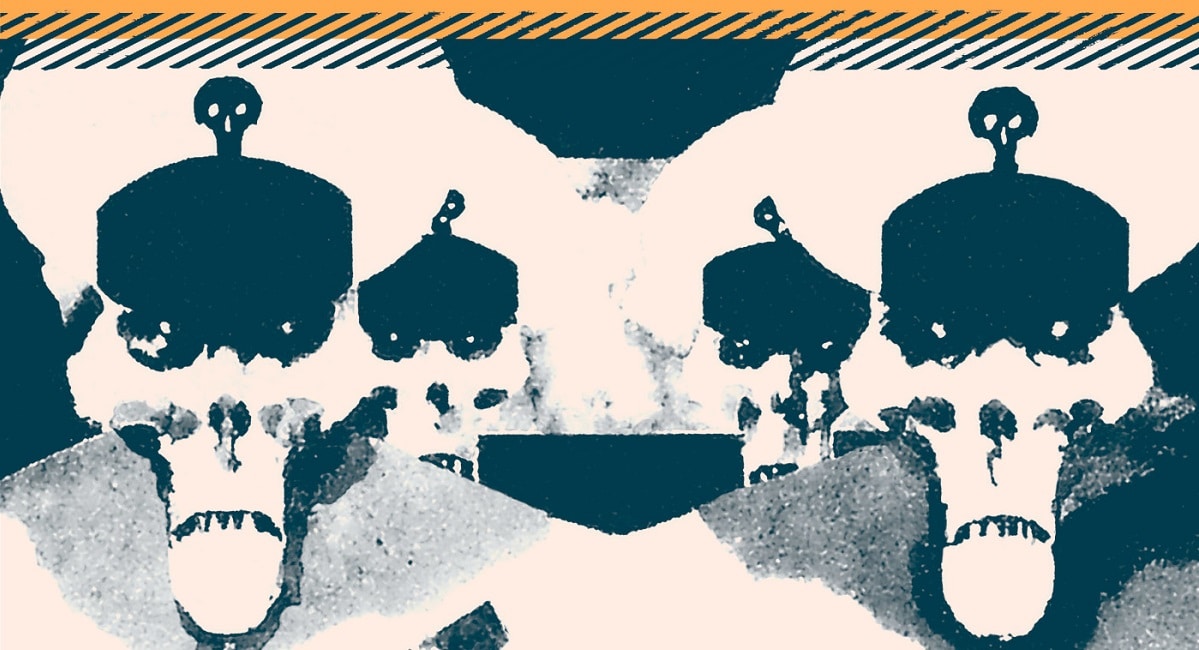
2024 just might be the year of Dreamer! Played by Nicole Maines when she was introduced on the CW’s Supergirl, Nia Nal subsequently made the jump from screen to comic book panel with a short story in DC Pride (2021) #1. Last week, the middle grade graphic novel Bad Dream: A Dreamer Story, written by Maines with art by Rye Hickman, colors by Bex Glendining and lettering by Hassan Otsmane-Elhaou, was published. And this week, Suicide Squad: Dream Team #2, written by Maines, penciled by Eddy Barrows, inked by Eber Ferreira, colored by Adriano Lucas and lettered by Becca Carey arrives.
With all this Dreamer action underway, The Beat recognized speaking with Maines was a dream come true. We caught up over Zoom to find out more about writing Bad Dream and Dream Team, to ask about including another trans DC hero in Bad Dream, and to find out which characters Maines hopes to write for in the future.
This interview has been edited for clarity and length.
AVERY KAPLAN: Just in case any of our readers are unaware, can you tell us about your road to making comics, and specifically, your unique relationship with Dreamer?
NICOLE MAINES: The short version is, I portrayed Dreamer on the CW Supergirl series in seasons 4 through 6. And she was a character who was created for the show. She was based off of the Legion of Superheroes character Nura Nal. And of course, that takes place in the 31st Century. So Dreamer is the 21st Century ancestor of Nura Nal.
And as the show was coming to an end, I was talking to DC. And I said, “Hey, this is the first trans superhero on television. She means a lot to a lot of people, she’s really cool. People have really attached themselves to her who aren’t even in the community. And people love her, and she’s cool. Is there a plan to bring her into the comics and keep that story going?”
And there wasn’t. So I had gone in, and I had pitched this whole ongoing series. Which really demonstrates my fundamental lack of understanding of how comic books work. Because I really just thought I was going to roll up, and this character who has no history was going to be given an ongoing.
But, you know, they humored me. And they said, “Well, we have this YA line that’s really popping off and we need more content for it. And we don’t have a story about sisters.” And I said, “Well, Dreamer has a sort of infamous sister.” And they said, “OK, well, why don’t you write that?” I said I’d take a crack at it; I’d never written a comic before. So that was early 2020, I started working on Bad Dream, so it’s been a very long road.
KAPLAN: How does writing a graphic novel compare with writing a single issue?
MAINES: You know, in some ways it’s easier, in some ways it’s a lot harder. It’s easier because I had so much longer to work on it, and I really had the time to let it cook. And take the time to really decide what the right way to do it was.
Whereas with single issues, the timeline is much shorter. But, I found myself getting crushed under the weight of a 200 page comic. That’s a lot to write; that’s a lot to keep track of; that’s a lot to make sure the story is staying on track, the characters are working, the arc is arcing.
It’s much less to manage when you have 10 pages, even, versus 20 pages. Because I even find that right now with Suicide Squad, because I haven’t written a series before, either. I’m running into that same problem, where I get so excited. And I’m like, “Oh, we’re going to do this, and we’re going to do, and I have all these pages, oh my god, we’ll totally be able to do it!” You always need more pages than you think you do, every single time, and that’s what I’m realizing.
So, slowly learning over the course of writing a graphic novel and the different comics: less is more.
KAPLAN: Can you tell us a bit about including Galaxy in this story?
MAINES: That wasn’t originally part of the plan. That came early on, but it wasn’t originally part of the plan. So they had sent me an early copy of Galaxy: The Prettiest Star to read. And they asked, “Hey, we want to include these other characters. We really want our young adult graphic novel-verse to start connecting and have these crossovers. And we feel that Galaxy and Dreamer is kind of the perfect duo to do that with.”
They sent me the first 99 pages of it, so I read that and got to work. So for anyone who hasn’t read Galaxy, first, shame on you. And second, Galaxy was presenting as a human male for years. And she had this weird space-avocado-looking device that could turn her back to her true form.
What I was not aware of, because they had only sent me the first 99 pages originally: she destroys the device in the back half of the graphic novel. So I was outlining – and outlining fairly heavily – on the ability to go back and forth. And it was going to be yadda yadda code switching, yadda yadda how do you present in different environments. And then I read the rest of Galaxy when they sent me the galley copy, and I was like… “Work.”
So I had to tear out most of Act 2 of Bad Dream. And from there, I kind of never recovered outline-wise, and it sort of turned more into “now I’m just writing as I go.” Plan went out the window.
But I was really happy with how it came out, and I got to really know Jadzia Axelrod through that process. And I adore her and I adore these characters, and they’re the perfect compliment to Nia and she fits right in with them. The most fun I had was just getting to write the way that these four girls talk and interact and joke around and bust each others’ chops. Those are some of my favorite moments in the comic.
KAPLAN: What was it like collaborating with Jadzia?
MAINES: Fantastic! She’s great. And now, DC has a real problem on their hands. Because now, the dolls are talking. And we’re like, “Ooo, girl, they’re not ready! They’re not ready for what we’re gonna do girl!”
So we’re always brainstorming and going back and forth and pitching stories to each other. [laughs] Because we haven’t seen Galaxy and Dreamer in the main continuity yet, and they’re going in completely opposite directions in the main continuity. Galaxy is this traditional, full superhero; this beacon. And Dreamer, especially through the events of Suicide Squad: Dream Team… As Galaxy’s doing this and growing closer to the sun, Dreamer is just on a downward spiral into the pits of Hell.
So we’re really excited to finally bring those two back together. And having, I think the best way I can describe it is as sort of an Elphaba/Glinda relationship. I’m just a Broadway girlie at the end of the day.
KAPLAN: I got so excited when I heard Galaxy was going to be in Bad Dream.
MAINES: I love those two together so much. I can’t wait. There’s so much we can do with them, especially since they are two of the most powerful characters in the DC Universe right now.
KAPLAN: What are your thoughts on the town of Parthas?
MAINES: One of the biggest changes from the show to the comics was this idea of the utopia that Parthas is. In Supergirl, Dreamer talked about Parthas as this really idyllic place. She never had any problems coming out, and everybody was really inclusive and accepting, and it was diverse and it was great. And I wanted to keep a lot of elements of that, because that was important and it’s important for her to grow up in an environment with aliens, and having that be a part of her identity.
But I wanted her to include what I think a lot of trans folks go through: the call is coming from inside the house. Taking shots from other marginalized people, especially within the LGBTQ community. As we’re seeing the LGB Alliance and shit like that; the willingness to cut off trans folks (like we aren’t to thank for most of our victories, but that is neither here nor there). I really wanted to highlight the way that, even among diverse communities, transness seems to be the last hurdle people can’t get over, for some reason.
And we’re talking about sexual diversity, religious diversity, ethnic and racial… So many of the conversations are the same, that we’ve been seeing throughout various civil rights movements. And it’s just really interesting to me, the way that other marginalized folks manage to do the mental gymnastics to be bigots themselves.
So I wanted to use Parthas to hold up a mirror to that, and say, “Look how fucking stupid you fucking look. Look how fuckin’ orange you look girl!”
KAPLAN: And I love how in Bad Dream, that’s still accomplished with empathy, but also without excusing it.
MAINES: 100%. I mean, look: we can understand why people do the things that they do. We can understand the root of transphobia, the root of homophobia and of racism; we can get where it all comes from. The same way you can look at an abusive partner and understand what in their life has made them that way. But that’s a reason, that’s not an excuse.
That really is all there is to say about that. We all go through shit. We all have our own baggage that we bring with us into adulthood, into the world. And it is our responsibility as participants in a society to not make that other people’s problem.
KAPLAN: What has your collaborative process been like?
MAINES: It’s been really, really fun. That is one of my favorite parts of the writing process, is getting to see the way the artists interpret my scripts. And I always try to leave as much room for the artists to do whatever they want as I can.
A lot of the time the ideas that illustrators will come up with are better than what I originally thought. So usually my response is, “Yeah, do that, that’s awesome. Go go go, do it!”
With the dream sequences in Bad Dream, Rye had so many brilliant ideas. So I said (and I usually do this in all my scripts): “If you are moved in a particular direction, that’s how we’re going to get the coolest imagery and the coolest visuals, so, do that. If you want to do something cool… that’s just going to make me look better, so, go ahead.”
KAPLAN: Do you have a personal writing routine?
MAINES: It varies. A lot of my best work gets done in the wee hours of the morning. Sort of that midnight-to-three-AM chunk is when the creative juices are flowing the most. Which I’ll help with a little bit of ganja.
I like going on walks and listening to music. I’ll try to put myself in an environment where I can let those creative juices flow freely. Because I find it’s a lot harder – I was actually running into this with the last issue of Suicide Squad – I was doing the same routine I usually do and nothing was coming. And that is the hard part. I try not to force it, if you try to force it, it reads forced. And the best way is just to get in that zone, come up with a playlist that pertains to the story you want to tell and just kind of see what moves you.
I was having this call with Matt Levine and Paul Kaminski earlier today, we were brainstorming some stuff for the ending of Suicide Squad. Because it wasn’t quite working yet, and we were going back and forth. And I said something and we all collectively had that moment of, “Oh!” And that’s the best!
I guess my writing routine is less rigid than it ought to be, but that comes from a place of trying to let those ideas come organically. And of course I do all of that and I find myself backed up against a deadline and three days out, and I have no ideas. So I’m like, “Shit!”
KAPLAN: Is there a DC hero you want to write in the future (or continue writing, as the case may be)?
MAINES: I’m really loving Amanda Waller. I’m really really loving that character. I was talking to my mom about it earlier today.
I just think she’s so interesting. Particularly through the lens of being a marginalized woman. Her intersectionality is very interesting. Approaching her from that direction yields a lot of cool shit.
But characters that I haven’t written for? I love Poison Ivy. I love a morally gray girlie. I’m like, “Yes, kill people, and then we’ll decide if that makes you a good person or not. I think that’s cool and interesting.” Eco-terrorism? Let’s weigh the pros and the cons.
What was that meme a while ago? It was a meme on top of a meme. It was about Batman and Robin the movie. But they have a film about a man who was trying to cool the planet, and a woman who was trying to reform the Earth. And they wanted us to root for the billionaire? Okay…
I always like the villains. I always liked the bad guys, growing up. I like the motivation. I like the analysis. And that’s what Suicide Squad is about: what is a hero? What is, in this context, the right thing to do? What would a good person do? You know, this trolley question. Do you pull the lever or not? What is your moral responsibility to do, I think is neat.
So Poison Ivy is a character that I absolutely love and that I would love to play around with, especially with Harley Quinn. And hell, let’s throw Catwoman in there as well, let’s just do the trio. I love Batman. But Poison Ivy would be at the top of my list.
KAPLAN: Finally, I wanted to give you space to discuss your activism, whether through the lens of comics or beyond.
MAINES: My activism right now is really grounded in superheroes. Honestly, that has been so refreshing and invigorating for me, to be able to speak to things that matter to me through this different medium. I have been doing the good work since I was in fifth grade, I’ve been sort of centered around this conversation, and I’ve been deeply embedded in combating transphobia and looking that straight in the eye.
And it gets exhausting. It gets to the point, especially now, as we’re watching people like J.K. Rowling be further platformed, and we’re watching Ben Shapiro and all these people continuing to spew hatred and bigotry as though they’re trying to do us a favor?
It gets so exhausting, and I was getting to this point where I was just saying, “I don’t know how to keep having this conversation. And I don’t know what new ways that I can articulate that you should just be a good person. That you should just have empathy for other people. If you don’t agree with my lifestyle… ignore me, bitch!” Especially when you’re a billionaire. “Girl, why do you care about about anybody? Girl, what chyoo talking about public bathrooms? They don’t just build one out of gold and ivory wherever you sit down?” I just, I can’t.
And so, the comic books have reinvigorated that for me. And it’s been this new way that I can have fun doing this, and tell stories that are entertaining people, and hopefully I can do that in a way that maybe you walk away having more empathy for trans people. Or, just you learned something. I would hope, at the very least, you see a little more of our humanity.
You get to a point where I don’t know how else to articulate, you’ve got to be a good person.
KAPLAN: And people underestimate how effective any sort of representation, but especially comic book representation, is.
MAINES: Yeah. Well, comic books have always been how we talk about important social issues. It’s like, just now they’re finding themselves on the other side of the proverbial heat vision, right? And it’s that moment from Euphoria where they say, “Wait, is this fucking play about us?”
You know, Superman has always been an immigrant. Iron Man fought in the Cold War. Captain America fought literal Nazis. And so now, as we’re hearing all these people complain about “wokeism in comics”…
Like, girl. What comics have you been reading? That’s what I want to know. Because superheroes have always been purveyors of social justice and change. They have always gone against the grain, fought for the underdog, fought for the little guy, and advocated empathy. Truth, hope, justice, the American way – that whole spiel. That’s what it’s always been about.
And now, if you’re finding yourself disagreeing with Superman, disagreeing with Wonder Woman… I would hope that that would tell you more about your own position, and maybe you need to start reevaluating some things.
Bad Dream: A Dreamer Story is available at your local bookstore, comic shop and/or public library now. Suicide Squad: Dream Time #2 arrives at your LCS beginning Tuesday, April 9th, 2024.


